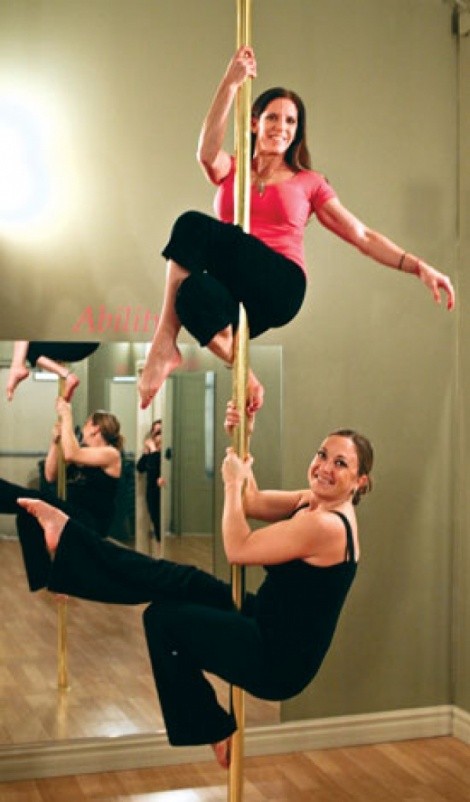
What type of woman “poles”?
Lizz Schofield: The stigma’s changing. When we first opened, we struggled getting a lease. We had a hard time. But once we were here and established, they came in, and I was betting they were in the same mode that I was in: They wanted to break out of their skin and do something safe and good. Probably half of our students are LDS and moms. That’s the kind of woman who’s finally got time to devote to herself. We try to make Soiree like a spa, really safe and nurturing.
Chastitie Lujan: In LDS homes—I was raised in that culture—there’s a lot of push to learn things and be very talented. You take dance, you take music, you speak in church. Constantly pushing to better yourselves has led to people being competitive and learn new things and wanting to do well on it. These women are persistent. They want to get better and better, and they really want to learn.
LS: And since it’s OK—you can be clean living and do this—it’s opening women’s minds. They see all different kinds of women in their class, all different sizes and shapes. I’ve often said I don’t want to just create a studio, I want to create an elite social club for women, a place where we can have a tribe.
CL: There’s a lot of pole enthusiasts out there who will take classes just for fitness and fun, or just to see what it’s all about. Some classes out in the world are geared toward exotic-style dance, some are geared more toward fitness and sport. The growth of the fitness movement probably started in the early 2000s. Between 2007 and 2009, there was a growth of over 300 percent in studios worldwide. In the past few years, we’ve seen phenomenal growth. People are getting out there, there are more studios available, and people are seeing that it’s not a stripper pole. And men pole, too.
What about people who think any pole is a stripper pole?
LS: I think it’s great for people to think that it’s scandalous, because then you have to think about it. Any introduction is perfect. If you see us here, and it’s offensive to you, tell all of your friends how offensive I am, because I’m not going anywhere. I think the dance roots of pole, the aerial roots of pole, the tribal roots I think every aspect needs to be embraced. I’m making sure it’s legitimate, that it’s not a fad.
What are your plans for taking it to the Olympics?
CL: One of the things we have to do to get it into the Olympics is agree on levels and terminology and ways of judging.
LS: All last year, I spent traveling and judging competitions. We switched it over to a point system on technical, artistic and dance levels. It’s about proving that pole fitness is an international, legitimate sport. If we’ve aligned 50 countries already, it’s on our way. We’re shooting for 2016 to make our formal proposal. The industry is growing up. It was a baby, like yoga was once upon a time, and there have to be people at the forefront who hold it up to a certain standard so that it’s recognized as a real, legitimate form of fitness and a real, legitimate art.